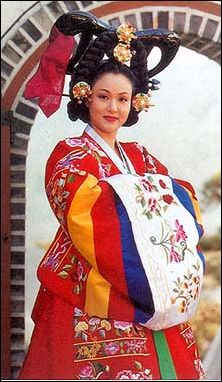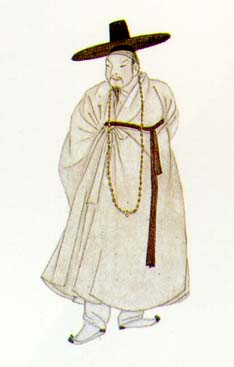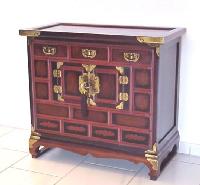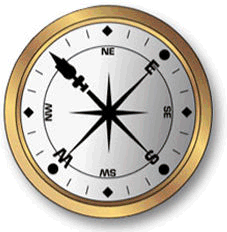The History and Characteristics of Han-bok and Hon-bok
 |
Historical Transitions of Korean Clothes The Korean Clothes were developed according to the seasonal changes of Korea. In winter, the clothes were made to protect the human body from the cold weather, and in summer, they were made well-ventilate against the humid and hot weather. The social circumstance had effects on people's clothes and they had worn different clothes according to their social classes since the period of the three Kingdoms. Also, Korea and China influenced each other's clothing because they had lots of cultural contacts. Some small changes were added as the time goes on , but the basic form of traditional Korean clothes has been inherited. |
The History and Characteristics of Han-bok
| Han-bok consists of a blouse called Chogori and a pair of pants (for men), or a long skirt (for women). People
wore a coat called Doo-roo-ma-ki for keeping the body warm or the
ceremonial purpose. The two-piece suit was the basic form of clothes of Northern horse-riding nomads as found in the ancient-tomb murals, and has been inherited till now. The clothes reflected the social status, and people wore the clothes of different designs, patterns, and colors according to their social classes. For example, in the Joseon-Dynasty, the king wore the yellow dress, which represented the center of the Universe. The common people usually wore white-color clothes and that's why the Korean are called "the People of white clothes". Han-bok is characteristic of the subtle curves and a lot of blank spaces. women's Han-bok is composed of Chogori (a blouse) and Chima (a long bulky skirt). They wore several underwear's inside the skirt and traditional socks called Beo-seon. |
 |
| Females put on a vest or a coat when they wanted to keep their bodies warm or went outside of home. Men's Hon-bok consists of Chogori and Paji (a pair of pants). They put on a belt around the waist and the bands around the ankles to fix the baggy pants on the body. There were also the vests and coats made for men. | |


